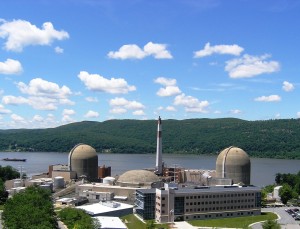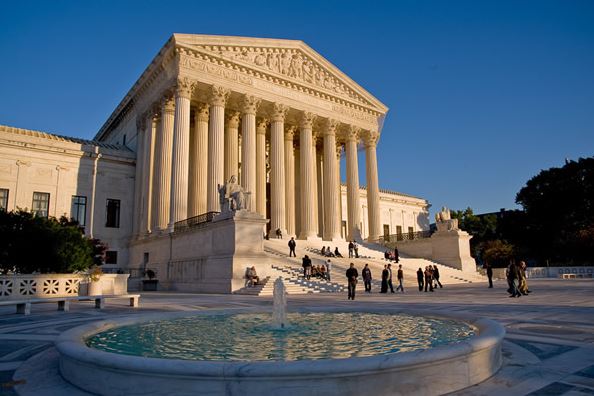“On the Beach,” the 1959 post-apocalyptic movie starring Gregory Peck, told the story of a group of survivors coping with the aftereffect of nuclear war. Ralph Nader ”“ the political activist, author and perpetual U.S. presidential candidate ”“ said a nuclear power plant meltdown could be equally dramatic.
“There needs to be another movie, ”˜On the Hudson,”™ Indian Point,” he said.
Nader is a longtime opponent of the nuclear energy industry and co-author with John Abbotts of the 1979 book “Menace of Atomic Energy.” He was one of the speakers at an Oct. 8 panel discussion in Manhattan”™s Upper East Side on the lessons to be learned from Japan”™s Fukushima Daiichi meltdown in 2011.

Nader said it would be nearly impossible to safely evacuate the area in the event of a meltdown at Indian Point, located in Buchanan about 30 miles outside of New York City. Even though the city is outside of the immediate 10-mile evacuation zone, he said panic would ensue and create chaos in the region. About 17 million people live in the 50-mile radius outside the power plant.
“People can hardly get out of New York City at rush hour time,” Nader said, saying a drill should be held to simulate the complexities of evacuating the region. “Any nuclear plant that does not have a live drill to make sure its evacuation plan is anything other than a fantasy plan cannot be allowed to operate.”
New Orleans-based Entergy Corp., which owns Indian Point Energy Center, is looking to relicense the plant”™s dual reactors for another 20 years amid opposition from environmental groups like Riverkeeper, whose executive director Paul Gallay moderated the New York City discussion. Entergy first filed for renewal from the Nuclear Regulatory Commission in 2007. The current relicensing is the lengthiest process of its kind in U.S. history and no plant in history has closed due to an expiring license.
Supporters have noted that Indian Point employs roughly 1,600 and produces 25 percent of electricity consumed in New York City and Westchester County. The Business Council of Westchester, of which Entergy is a member, conducted a study last year that said closing the power plant would drain $11.5 billion from the local economy, cause electric rates to jump 6.3 percent, increase the likelihood of blackouts by 280 percent and cause an uptick in carbon emissions from a shift to other forms of power.
Panelist Arnie Gundersen, a nuclear engineer, called much of the logic in support of nuclear power plants “motivated reasoning” from business owners and policymakers. The forces at play are great, he said, and require unending around-the-clock maintenance. “This is a technology that could have 40 good years wiped out in one bad day,” he said.
Gundersen said the Fukushima meltdown was caused when outside power was cut off by a high-magnitude earthquake followed by the coolant system being knocked out by tsunami flooding. As unlikely a combination as that might be, two terrorists willing to lose their lives could knock out the power and destroy the intake to cause a meltdown. Gundersen also took issue with the evacuation plan, saying he didn”™t think it adequately addressed the possibility of other factors such as the flooding that Japan dealt with during its meltdown.
“It”™s hard to evacuate when your neighbor”™s house is floating down the street,” he said.
Jerry Nappi, a spokesman for Indian Point, said that the plant”™s emergency plan was approved by the federal government and is practiced and drilled on a regular basis. A booklet is distributed annually to residents and businesses within 10 miles of the plant. As for the threat of terrorism, he said Entergy has spent $100 million since Sept. 11, 2001, on intrusion detection and prevention and other security measures. “The facility is one of the most secure and hardened nonmilitary industrial facilities in the world,” he said.
Naoto Kan, the prime minister of Japan during the crisis, was a member of the panel. He said as a result of Fukushima all power plants in the country were shut down and were reviewed on a case-by-case basis to see if they should be reopened. Since Kan left office at the end of 2011, two plants have been cleared to reopen but are under maintenance. “We at least implemented a more difficult restart,” he said through an interpreter.
Former NRC Chairman Gregory Jaczko, a panelist, visited Japan after the meltdown and met residents whose lives were permanently disrupted and who were displaced indefinitely. “You cannot put these impacts into dollars,” he said. Jaczko said he was against relicensing Indian Point as a broader policy question.
But Dale Klein, another former NRC chairman, released a written statement after the event saying that comparing Fukushima with Indian Point or Pilgrim Nuclear Station in Plymouth, Mass., was “intellectually dishonest.”
“The nuclear power plants at Fukushima Daiichi did not have the same improved safety systems as implemented at our U.S. power plants,” he said. “Comparing the U.S. nuclear plants to those that have no added new safety systems and procedures is simply wrong.”
There are slightly more than 100 active nuclear reactors in the U.S. and about 450 in the world. Nader said the fight isn”™t about specific plants but nuclear power in general “if only to keep our descendants from cursing us.”
He blamed a powerful and politically influential nuclear lobby for the industry”™s endurance over the years and outlined the complicated and potentially dangerous process of mining uranium, transporting it to power plants, creating a nuclear reaction, pumping billions of gallons of water to cool generators and then storing material that will remain radioactive for thousands of years just to produce heat or boil water. A full-fledged reactor meltdown, he said, would contaminate an area as large as the state of Pennsylvania. “Is this the kind of gamble we want to take to boil water?”
Entergy, a national company with annual revenues of more than $10 billion, bought Indian Point unit 2 from Con Edison in 2001, one year after it purchased unit 3 from the New York Power Authority. Unit 2”™s permit expired last month, but has been extended until the NRC decides whether or not to relicense the reactor. Unit 3”™s permit expires in December 2015. Indian Point 1 is no longer in use.




















